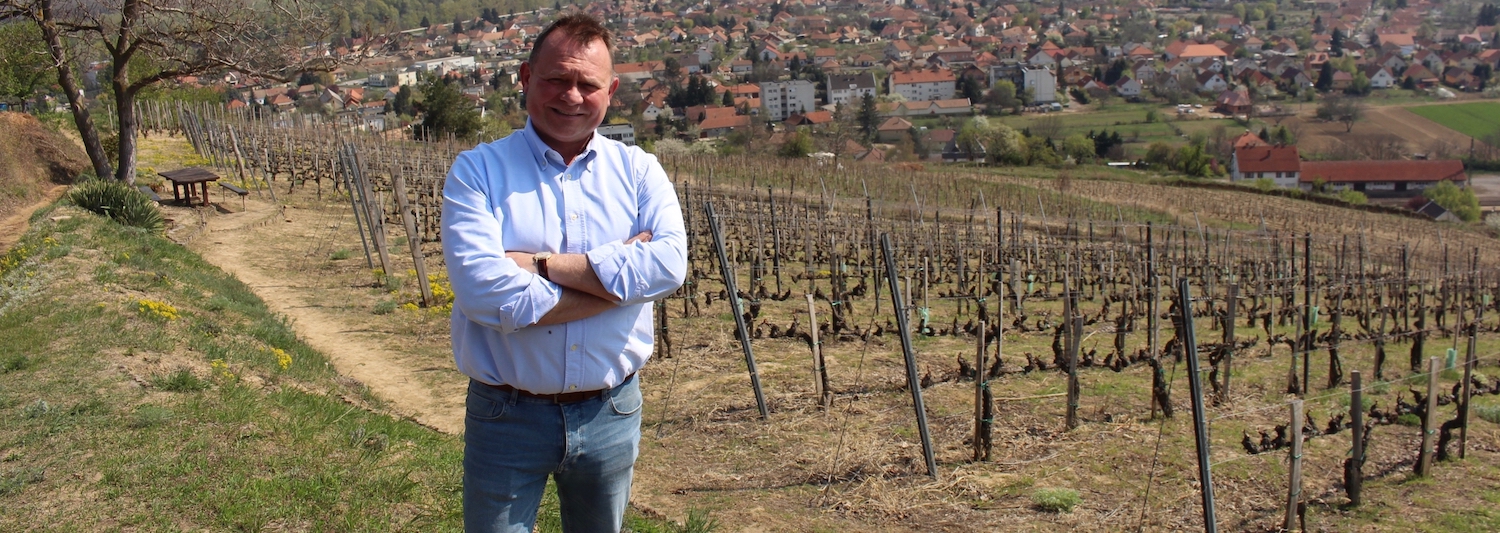

Demeter Zoltán, Tokaj, Hungary
Website: http://www.demeterzoltan.hu/
Zoltán Demeter can be credited, if not for introducing quality dry wine to Tokaj, then certainly perfecting it.
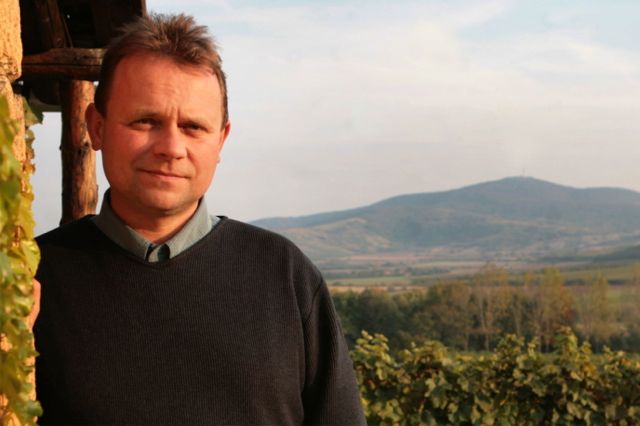
Demeter Zoltán
The people
Zoltán’s one-man cellar rests inside a historic house built in 1790 just a few blocks from where the Bodrog and Tisza Rivers meet in the town of Tokaj. He’s fully committed to his own race against time to rediscover the terroir of Tokaj as well as the firm belief that Tokaj is one of the most important wine cultures in the world. After working abroad in Napa (Stags Leap), Beaune to study viticulture and enology, as well as larger estates in Tokaj, he has arguably the most experience making dry Tokaj wines in Hungary next to Isvtán Szepsy, whom together are responsible for the success of the Királyudvar brand.
As of 2008 Zoltán now focuses entirely on his own 9 single vineyards spread over 7 hectares: Szerelmi vineyard in Tokaj, Veres and Becsek vineyards in Mád, Holdvölgy and Újhegy vineyards in Rátka and the Kakas and Lapis vineyards in Bodrogkeresztúr. A champion of the of the present and future of the region he is working to see that the laws governing the production of the wine respect tradition and the good taste of those who consume Tokaji. His selection of dry, Főbor (Original Hungarian word for Szamorodni), and Aszú are broadly considered benchmarks. They clearly reflect the complex geology of their site, the character of their varieties and Zoltán’s intensive cerebral nature. Multifaceted, crystalline, and enduring. According to Zoltán, “Wine is not the sound it is the instrument.”
As of 2008 Zoltán now focuses entirely on his own 9 single vineyards spread over 7 hectares: Szerelmi vineyard in Tokaj, Veres and Becsek vineyards in Mád, Holdvölgy and Újhegy vineyards in Rátka and the Kakas and Lapis vineyards in Bodrogkeresztúr. A champion of the of the present and future of the region he is working to see that the laws governing the production of the wine respect tradition and the good taste of those who consume Tokaji. His selection of dry, Főbor (Original Hungarian word for Szamorodni), and Aszú are broadly considered benchmarks. They clearly reflect the complex geology of their site, the character of their varieties and Zoltán’s intensive cerebral nature. Multifaceted, crystalline, and enduring. According to Zoltán, “Wine is not the sound it is the instrument.”
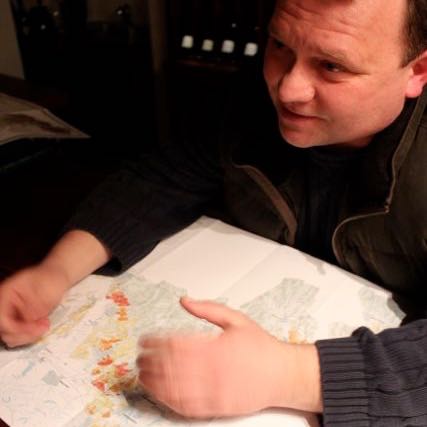
Demeter Zoltán looking at the Tokaj vineyard map
Vineyards
All of the single vineyards are 40 years and older and classified as Frist Growths. Eszter is sourced from 30-60 year old vineyards in both Bodrog-keresztúr and Mád villages just north and northwest of Mt Tokaj. Soils range from Loess to heavy clay to stony volcanic. Pesticides are not used, no fertilizer, some still plowed by horse, and sulfur only when absolutely needed is sprayed by hand. Zoltán spends an inordinate amount of time in the vineyards and is one part student while admitting to a certain amount of magic that’s unique to Tokaj.
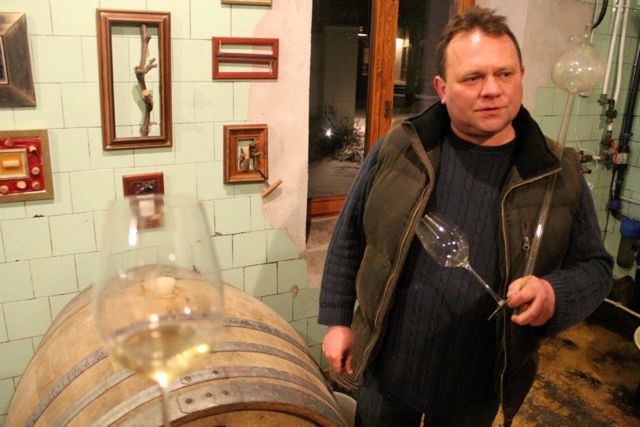
Demeter Zoltán in the cellar
Winemaking
The entire winery is designed to be run by one man. Every hose, tool, pump, valve, and drain has an exact place and purpose. It’s also part gallery with a road kill snake fashioned into a “DZ” in a frame, glassware hung in the shape of cross beneath a Crucifix, and a baby grand piano rescued from the trash suspended by wires hangs directly over the only coach. Concerning the actual winemaking, almost everything ferments in steel tank, ambient yeasts are preferred but commercial yeasts are employed when needed to get the wine fully dry. All aging takes place in old oak barrels. Some Furmint also ferments and ages in oak.
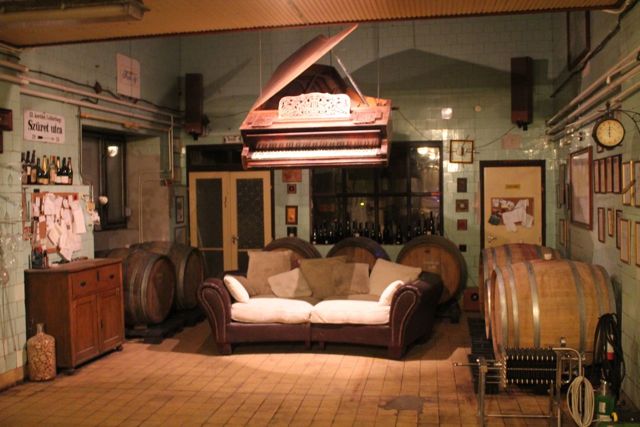
Suspended grand piano
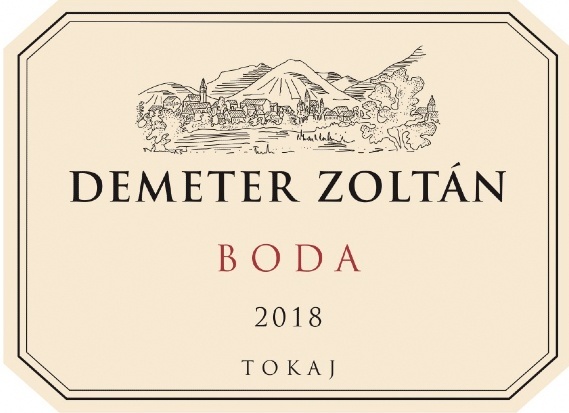
White Wine
Furmint;
12.2%
5.1 g/l
6.2 g/l
Furmint;
12.2%
5.1 g/l
6.2 g/l
This .3 hectares of 100+ year old Furmint was the only plot owned by Zoli’s family during Communism. This was the maximum size per household allowed by the Government for personal consumption. It’s also our most northeastern Furmint in the whole portfolio. Planted near the village of Sátoraljaújhely near the Slovakian border, it’s on the Eastern side of Magas-Hegy. The soils here are heavily volcanic with particularly high amounts of dacite and nyirok (reddish clay with broken up andesite and rhyolite tuff). Older small cluster Furmint clones with tight 1x1 meter spacing require everything to be done by hand. Barrel fermented and aged, the entire 2 barrel production went exclusively to magnums. The 12% alcohol certainly reflects the northeastern exposition, but the level of concentration and elegance from the old vines and clones tie the whole thing up in something extremely special.
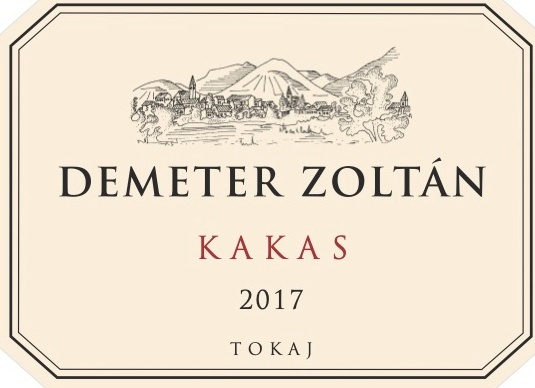
White Wine
Furmint;
13%
4.9 g/l
7.2 g/l
Furmint;
13%
4.9 g/l
7.2 g/l
Zoli acquired the Kakas vineyard in 2004 which happened to coincide with his second vintage making dry wines despite making sweet wines since 1996. Apart from the Veres Dűlő, no other site has more trial and error than Kakas for dry Furmint. A decade ago, these wines were formidable. 14.5-15% alcohol, crazy acidity and bone dry. This brings us to the 2017 vintage and the first time we’ve ever been able to get some. The acidity is certainly still there, but the balance between the 5 or so grams of residual sugar and the 13.5% of alcohol to frame it out all emphasize Zoli’s ability to understand the place and pick at exactly the right time. There’s also a covered structure in the middle of the terraced vineyard with a grand table. Zoli invites winemakers from all over Tokaj (and beyond) to taste each other’s wines, commune about the appellation, argue, and set goals. Plato’s quotation on the back of the bottle sums up his position well, “csak tökéletes dolgok szolgálhatnak mértékül.” The direct translation is “only perfect things can serve as a measure,” but it’s better understood as perfection only lives in the realm of thought. If you ever meet Zotlán, this is exactly where conversations lead. 106 cases produced.
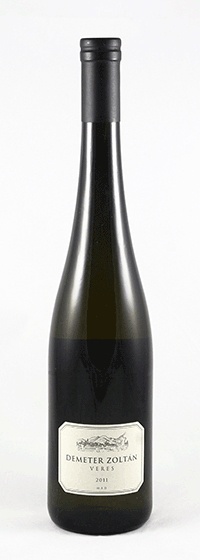
White Wine
Furmint;
13.1%
4.8 g/l
7.8 g/l
Furmint;
13.1%
4.8 g/l
7.8 g/l
This 100% Furmint is from the Veres (red) vineyard in Mád known for its reddish hue coupled with rhyolitic volcanic tufa and tons of zeolite. Back in 1746, this vineyard was rented to the Russian Imperial Court. It’s also typically one of Zoltán’s favorite dry Furmint sites because it can carry residual sugar and acidity so well and makes incredible sweet wines as well. Gently whole bunch pressed over two cycles, it was then fermented in steel tanks and then aged for 8 months. As a half sibling with both Chardonnay and Riesling, this vintage really showcases that family tree. The linear acidity is very Riesling like, but it has the roundness and fidelity to place akin to Chardonnay. Add to that the structure and thick skins of Furmint and it’s quite special.
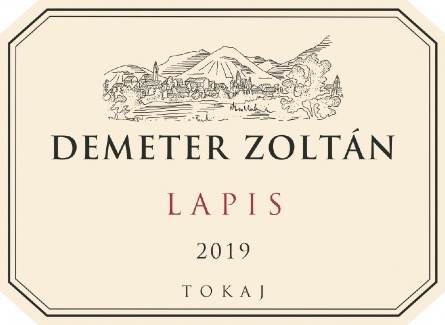
White Wine
Hárslevelű;
13.2%
8.8 g/l
6.3 g/l
Hárslevelű;
13.2%
8.8 g/l
6.3 g/l
The Lapis is already a place we know and adore from working with a different parcel from Bodrog Borműhely, but Demeter’s 45 year old vines are higher up away from the Bodrog River. With little to no botrytis and aged in acacia and oak barrels, this is direct pressed and laser focused Hárslevelű with a little RS that adds a creamy but not heavy balance. Now with some added bottle age, this is an extremely elegant vintage from one of the pioneers of dry Tokaj.
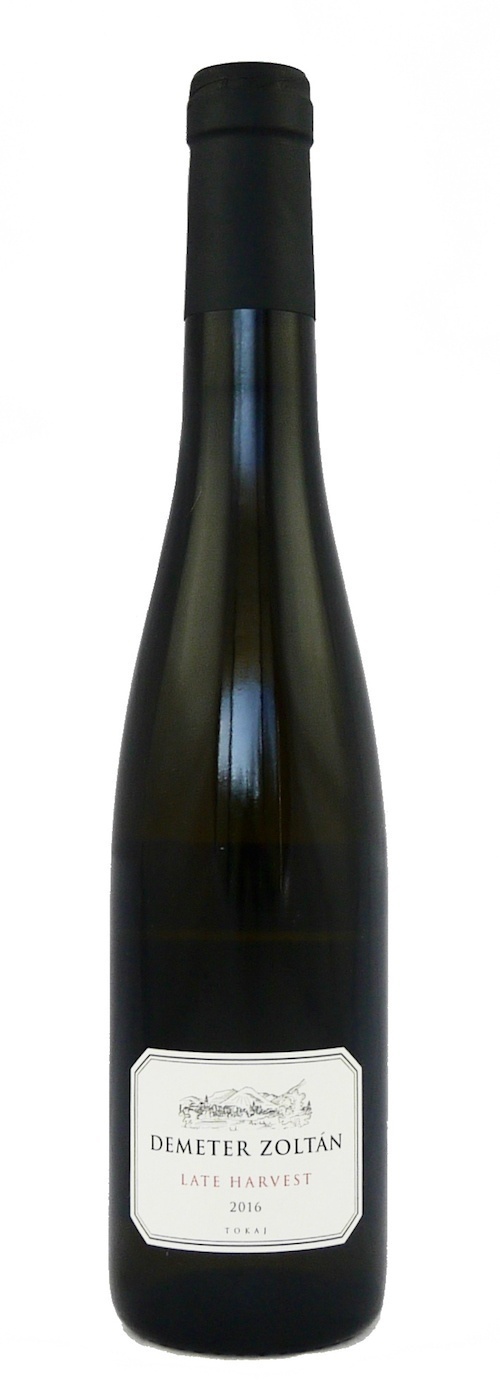
Dessert Wine
Furmint; Hárslevelű;
11%
140 g/l
5.3 g/l
Furmint; Hárslevelű;
11%
140 g/l
5.3 g/l
This is one of the most underutilized styles of wine from anywhere in the portfolio. Much like its siblings Aszú and Szamorodni, this often gets pigeonholed as a dessert wine. It can certainly function as one, but this can handle any stage of the meal. Far less botrytis, maceration, and oxidative qualities than the aforementioned styles, this still packs a ton of residual sugar into a package where you might simply guess off dry given the texture, alcohol and overall refreshing effect. Mostly Furmint but also backed up with a little Hárslevelű given the warmer vintage, this is so much wine trapped in a little 375ml bottle. With food, and despite the 140 g/l of residual sugar, this could also seamlessly be in a 750ml bottle.
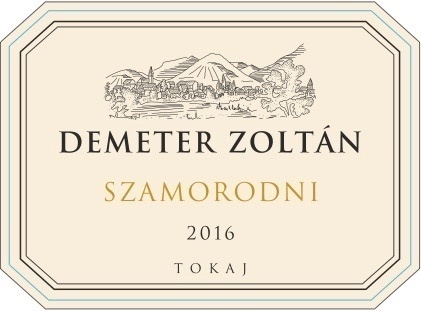
Dessert Wine
Furmint;
9.5%
212.2 g/l
6.99 g/l
Furmint;
9.5%
212.2 g/l
6.99 g/l
This 100% Furmint is from the Veres (red) vineyard in Mád known for its reddish hue coupled with rhyolitic volcanic tufa and tons of zeolite. Back in 1746, this vineyard was rented to the Russian Imperial Court. It’s also typically one of Zoltán’s favorite dry Furmint sites because it can carry residual sugar and acidity so well. When botrytis hits, this balance is amplified. With 9.5% alcohol and 212 g/l of residual sugar, it tastes like you’re refreshing the palate before getting into the sweet wines. The acidity here is astounding without being overpowering which makes it both pungent and elegant.
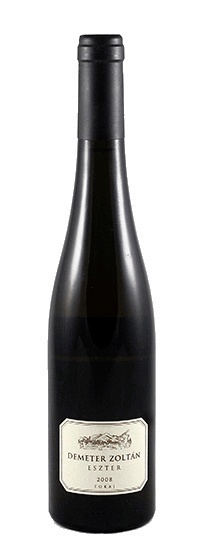
Dessert Wine
Furmint; Hárslevelű;
11.4%
137.4 g/l
Furmint; Hárslevelű;
11.4%
137.4 g/l
In 2009 Zoltán’s daughter was born and he quickly named this wine after her. The inaugural vintage will easily last until she’s old enough to drink it. Szamorodni, meaning both botrytis and fresh grapes harvested and fermented together achieves enough sugar to be a 5 Puttonyos Aszú, but due to the method and aging is less oxidative and more refreshing. A blend of Furmint and Hárslevelű from the volcanic Hold-völgy, Lapis and Veres vineyards, it’s suitable as a dessert wine, but better used as a sweet wine to pair with just about anything umami, fatty and pungent. There’s also a tea-like bitterness resulting from healthy and thick skins. This texture and feeling is what sets Tokaj apart from many other sweet wines. It’s not sweet for sweets sake, there’s a balancing act of acid, alcohol and bitterness as well. And if you look through the bottle to the back side of the back label you can make out a very telling quotation from Theodore Hesburgh, “ The most important thing a father can do for his children is to love their mother.”
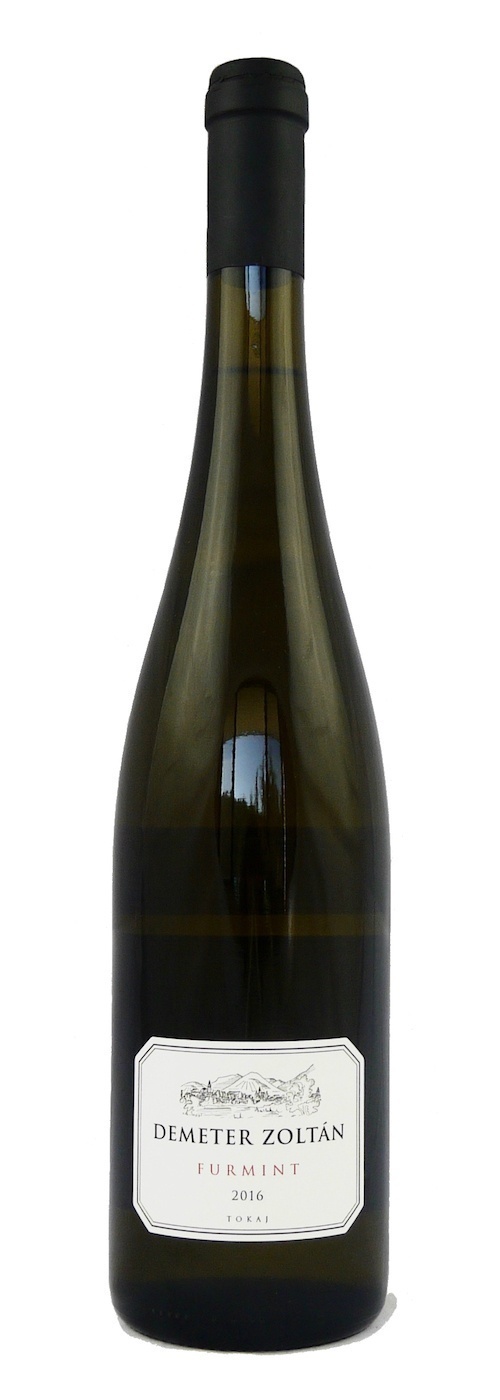
White Wine
Furmint;
14.2%
4.4 g/l
5.3 g/l
Furmint;
14.2%
4.4 g/l
5.3 g/l
Despite pushing the limits on both sweet and sparkling wines with extremely long élevage (5+ years) and off the charts residual sugar to acid ratios, Zoltán has never lost sight of having a solid table wine. Case in point is this estate Furmint which mostly pulls from the old vines of the Hold-völgy vineyard up in Ratka as well as the upper levels of the Lapis Vineyard near the Bodrog River. Two long, slow and gentle presses, and then fermented and aged in stainless steel. The wine has plenty of structure, but is also picked at a point where there’s still some residual sugar to tame the acidity.